Key takeaways:
- Participatory assessments enhance ownership and trust by involving community members in the decision-making process, leading to more meaningful and effective solutions.
- Social innovation, fueled by empathy and creativity, can transform stagnant systems and strengthen community ties through collaborative initiatives.
- Challenges in participatory assessments include conflicting viewpoints, time constraints, and ensuring a safe environment for open dialogue.
- Effective participatory assessments require building relationships, utilizing diverse feedback methods, and maintaining transparency to maximize engagement and trust.
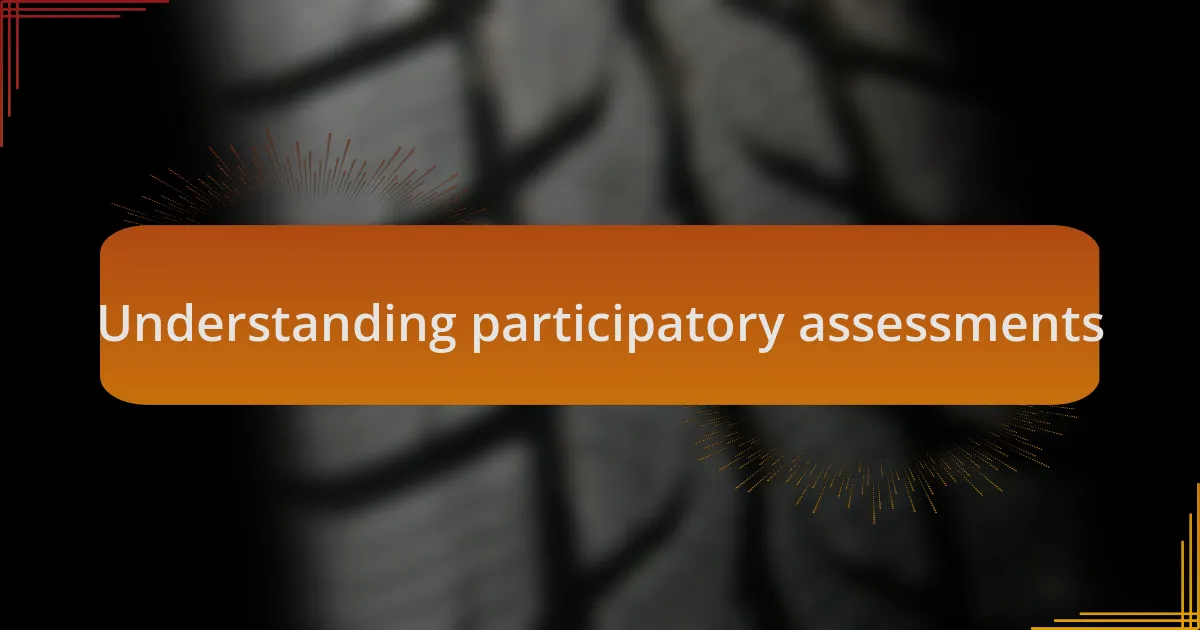
Understanding participatory assessments
Participatory assessments are not just about gathering data; they’re a collaborative journey where community members actively contribute their perspectives and insights. I recall a workshop I facilitated, where participants passionately shared their experiences. It dawned on me that when individuals feel heard, the information gathered transcends mere statistics—it turns into a powerful narrative of collective experiences.
At the heart of participatory assessments is the idea that local knowledge is invaluable. I often find myself reflecting on how much more meaningful findings become when people own the process. It begs the question: why would we rely solely on external experts when those directly affected have insights that can reshape our understanding?
Engaging communities in this way fosters a sense of ownership, empowerment, and, ultimately, trust. I remember a project where participants showcased their interpretations of community challenges through sketches. This artistic expression brought to light issues that traditional surveys might have overlooked, reminding us that assessments infused with creativity can yield profound insights.
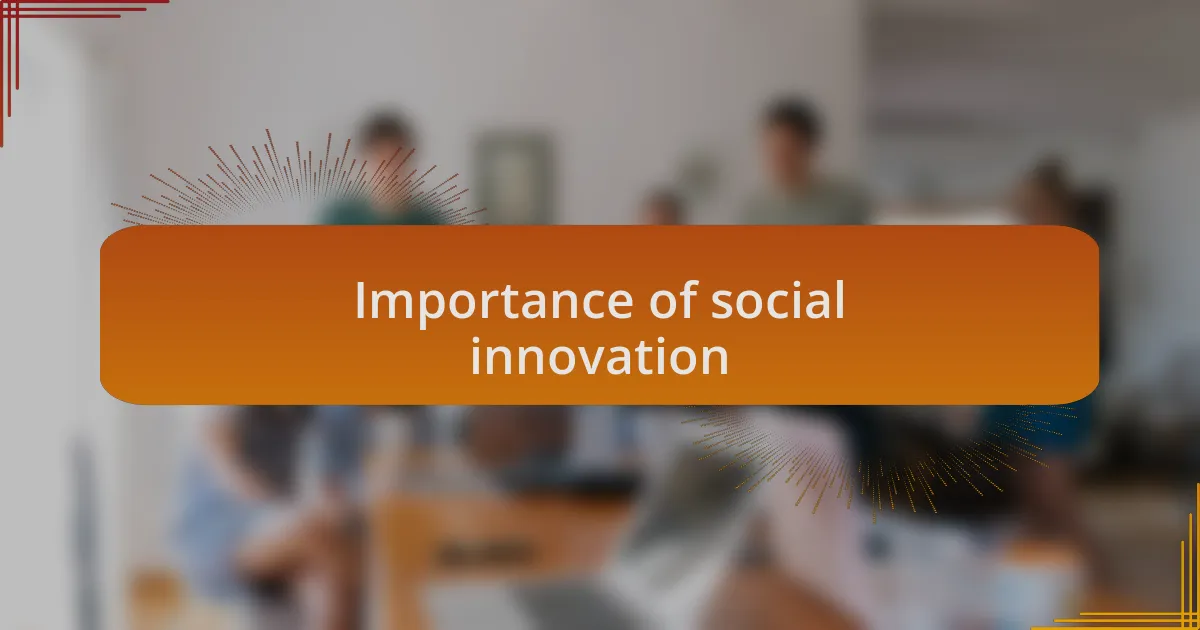
Importance of social innovation
Social innovation plays a critical role in addressing complex social challenges in our communities. I’ve seen firsthand how innovative approaches can breathe new life into stagnant systems. For instance, a social enterprise I collaborated with developed a model to train unemployed youth, not only equipping them with skills but also fostering a sense of purpose and belonging. Isn’t it fascinating how a single idea can transform lives?
In my experience, social innovation thrives on empathy and creativity. I often think about a community project that created a shared garden space. It didn’t just beautify the neighborhood; it brought diverse groups together, sparking conversations and collaborations that hadn’t existed before. This experience made me realize that when we innovate socially, we bridge gaps and strengthen the very fabric of our society.
The importance of social innovation cannot be overstated. It challenges us to rethink our approaches, pushing boundaries to find solutions. Each project I’ve encountered reaffirms that effective social change comes when we value the insights and experiences of those directly impacted. Why settle for the status quo when we can co-create better possibilities for the future?
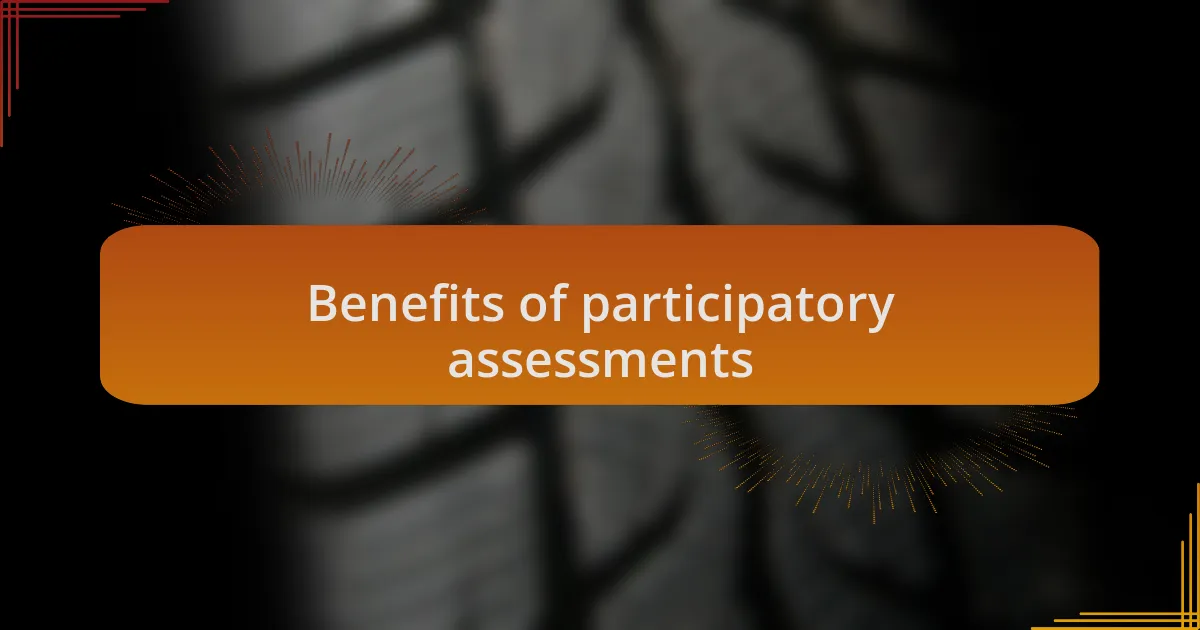
Benefits of participatory assessments
Participatory assessments bring a wealth of benefits that genuinely empower communities. I remember working on a project where involving community members in the assessment process led to surprising insights. They identified local issues that experts often overlooked, which not only improved the project strategy but also made residents feel valued and heard. Isn’t it inspiring when individuals realize their voices hold weight in decision-making?
Moreover, these assessments foster transparency and build trust between project leaders and participants. In one instance, I witnessed a local initiative gain momentum simply because the organizers maintained open communication throughout the process. When people feel informed and included, they’re more likely to engage, contributing to stronger and more sustainable outcomes. Isn’t it wonderful how trust can transform relationships?
Engaging individuals in assessments also cultivates a sense of ownership over the outcomes. I recall a community health project where residents actively participated in evaluating their needs. The result? They took pride in the solutions implemented, and it ignited a collective spirit of responsibility that resonated beyond the project. When have you felt that kind of ownership, and how did it change your perspective?
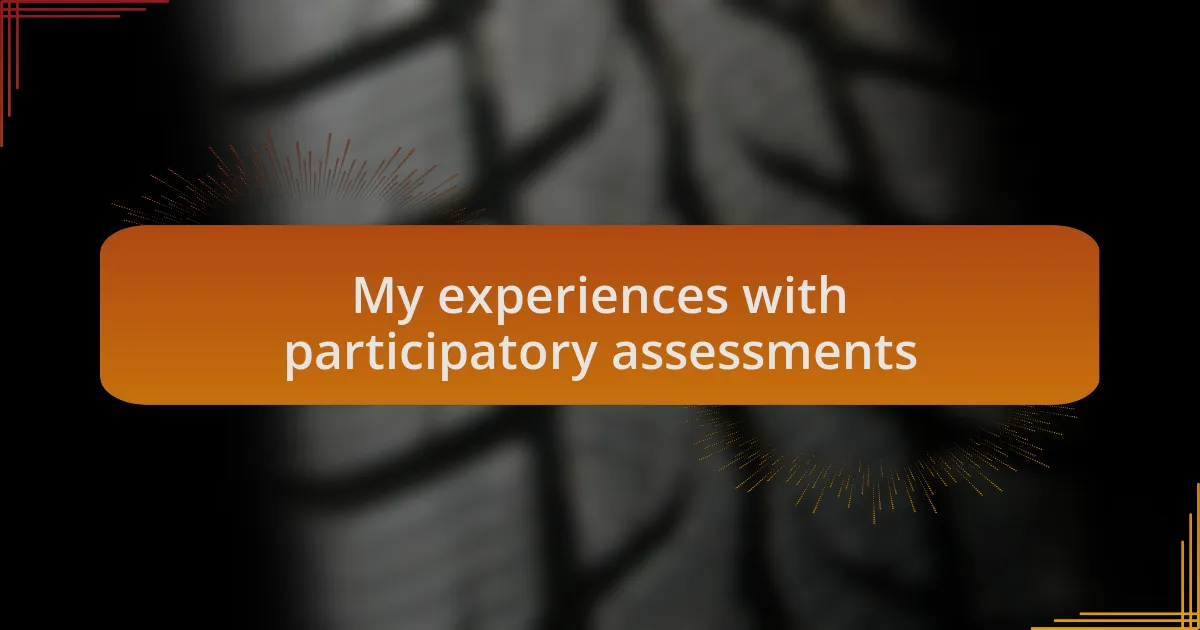
My experiences with participatory assessments
My experiences with participatory assessments have been both enlightening and rewarding. I vividly recall a rural development project where we engaged farmers in the evaluation process. They brought forth practical knowledge about soil and crop conditions, which experts had overlooked. Listening to their firsthand experiences transformed our approach and led to more effective solutions that truly met their needs.
During another project, I had the chance to facilitate discussions among diverse community groups. It struck me how every voice added a unique perspective, enriching our understanding of the social landscape. The emotions in those discussions were palpable; people genuinely cared about the outcomes. How often do we miss out on such wisdom when we don’t harness the collective experiences of those directly affected?
One particularly memorable experience involved a youth engagement initiative. The young participants crafted their assessment tools, which imbued the entire process with a sense of excitement and agency. Seeing them take the lead was a testament to the effectiveness of participatory methods. Could there be a better way to foster leadership and innovation than by empowering the very individuals who are impacted?
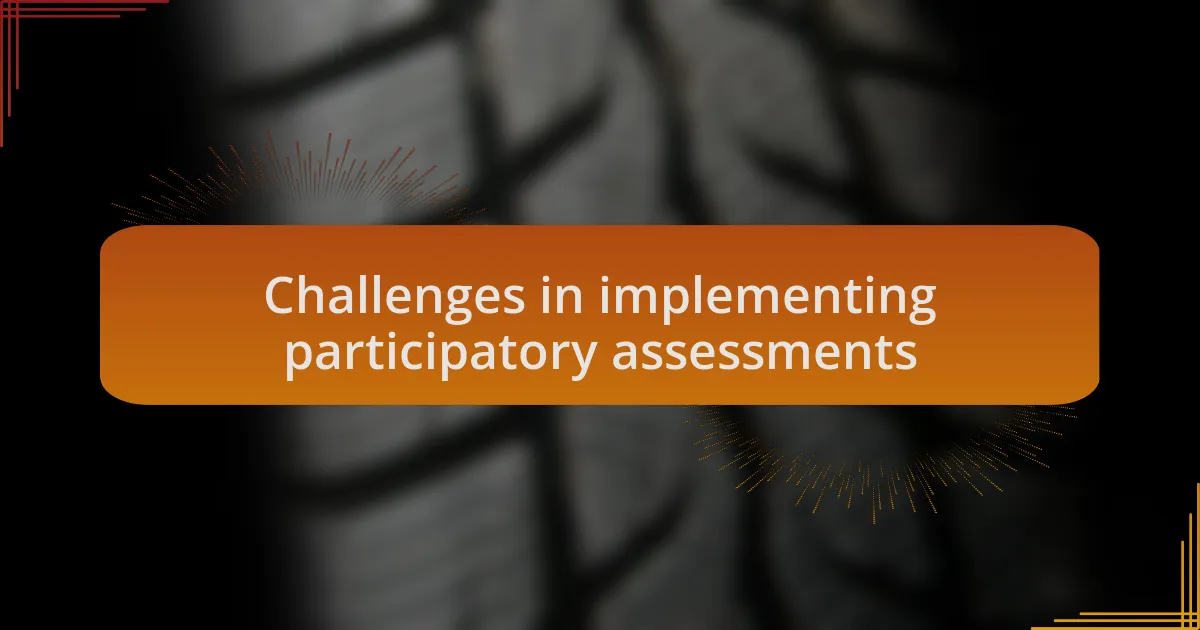
Challenges in implementing participatory assessments
Implementing participatory assessments can be quite challenging, especially when navigating differing opinions and perspectives within a community. I remember a project where community members had conflicting views on what problems should be prioritized. It felt like attempting to harmonize a beautiful symphony, only to find each instrument playing its own tune. How do we create a space where all voices feel valued while still making forward progress?
Another hurdle I faced involved time constraints and resource limitations. During a participatory assessment for a local health initiative, we had a tight deadline. I kept thinking, “How can we gather meaningful insights when there’s barely enough time to build relationships?” It was a stark reminder that while participatory approaches aim to include everyone, they often require more time and resources than traditional methods, which can be a significant barrier.
There’s also the challenge of ensuring that participants genuinely feel heard and understood. In one workshop, despite the excitement, I sensed that some voices were hesitant to share their views. This made me realize that creating a safe environment is crucial. How can we encourage open dialogue when fear of judgment lingers? Reflecting on that experience nudged me to focus on strategies that foster trust, guaranteeing that everyone feels comfortable contributing to the assessment process.
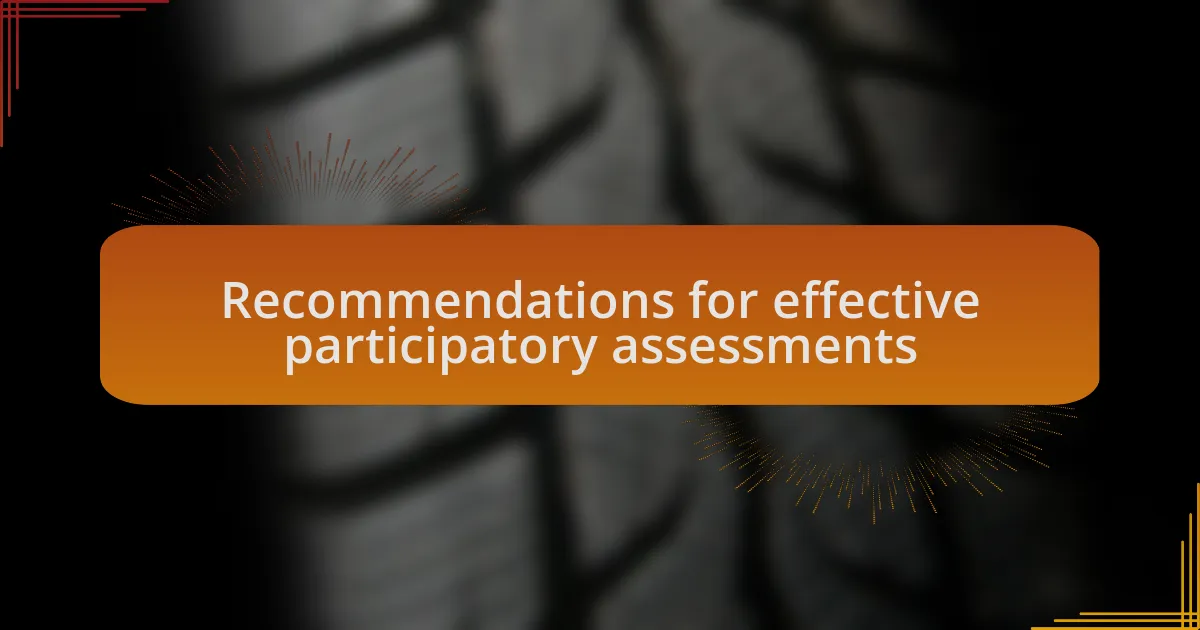
Recommendations for effective participatory assessments
Engaging a diverse group in participatory assessments begins with building strong relationships. In one project, I dedicated time to informal gatherings where community members could share their experiences over coffee. It struck me how these relaxed settings broke down barriers and fostered genuine connections, enabling participants to voice their thoughts more freely. Isn’t it fascinating how a simple cup of coffee can open the door to deeper conversations?
To ensure that every voice is heard, I recommend utilizing various feedback methods tailored to participant preferences. During a recent assessment, I introduced visual tools like mind maps and sticky notes, allowing individuals to express their ideas creatively. It was inspiring to see how this not only brought out quieter participants but also enriched the overall discussion. How often do we overlook the importance of adapting our approaches to meet people’s needs?
Lastly, I believe that transparency in the process is vital for cultivating trust. In a previous assessment, I made it a point to clarify how participants’ input would directly influence decisions. By sharing this information, I noticed an increase in engagement, as community members felt more invested in the process. Isn’t it reassuring to know that when people see the impact of their contributions, they’re more likely to participate actively? Emphasizing these elements can truly transform participatory assessments into powerful tools for social innovation.